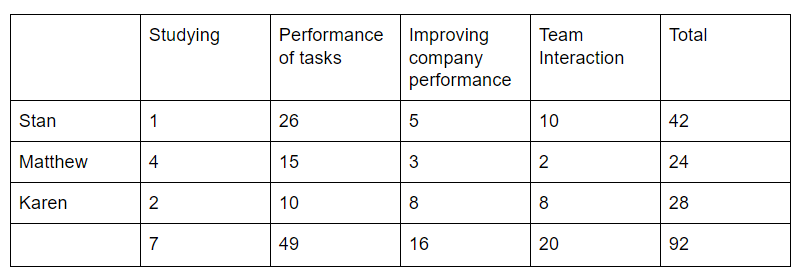For many years management, as well as training, was authoritarian and excluded the individualization of approaches. Management set goals and objectives. Employees simply had to fulfill them. The company came up with a way to train the employee, it determined the courses, and noted the passage of such with ticks.
However, in modern conditions, this approach does not work. Such plans are not only ineffective, but fundamentally do not correspond to personal preferences and goals of people. This devalues the importance of man as part of the business mechanism. Consequently, involvement is falling.
A radically different approach offers coaching. It is aimed at studying personal preferences, as well as the characteristics of employees and their further use in work. This allows you to create a culture in which each person is supported and encouraged in individual approaches to learning. Below are 4 techniques to help unlock your employees.
1. Find true motives
To increase the productivity of subordinates, use their true motives. There are 3 main motivators that can lead to better results.
Autonomy
It allows you to get a sense of independence from other people. A person is able to structure his work himself, he does not need the approval of someone else.
Solution: give employees more autonomy, give the necessary information and resources for work. Then just step aside and allow yourself to act.
Skill
It is important for people to feel like real professionals. They must understand that they possess valuable skills.
Solution: create a library, provide access to training materials and other resources that allow subordinates to develop and improve their skills.
Goal
Employees need to understand that their work is not just a way to make money, but the ultimate goal. In the vast majority of cases, they want to improve the world. However, the work takes a huge part of the time, so it’s almost impossible to realize the potential and help others, except as in the company. Give employees the opportunity to become part of something more. It motivates them very much.
Solution: show that the activity of the ward affects the key processes of the company. Look for new ways to attract employees to more global tasks.
These motivators allow you to achieve better results. They help make employees more autonomous, both individually and as a team. Thanks to this, you will need less time to control, and the work will reach a new level.
2. Increased neuroplasticity
Do you want to improve employee performance? The best way to do this is to increase their ability to be successful.
Neuroplasticity is the ability of the brain to create new neural connections. It depends on how well a person copes with complex tasks. Therefore, to improve performance, you need to train this.
Do not worry, the brain is inherently similar to a muscle, which means that constant training increases its performance. Below are 2 effective ways to train.
- Learn something new. The type of hobby does not matter, the main thing is to constantly replenish the list of your skills. Be sure to choose something new every time that you still don’t know.
- Perform challenging tasks. Riddles, intellectual games, puzzles are perfect for this. The main thing is that they are low in stress.
Adapt these methods to your command, you can combine them or apply separately.
Training for neuroplasticity will help you to achieve outstanding results. As the brains of people become more flexible, employees will better absorb and remember new information. So it’s more efficient to cope even with the most difficult tasks.
Solution: try to use the practice of successful companies. They allocate a certain number of working hours per week for the implementation of their own projects. Moreover, projects should be associated with the company to some extent. This practice has helped Google to create many interesting products that are popular among users even today.
If this is not possible, practice the development of neuroplasticity through training. Each company is a set of specific rules. Keep them in mind and find a way to improve your employees’ ability to solve complex problems. In the long run, it will more than pay off.

3. Help to focus on the essentials
The modern world is characterized by a huge amount of information. These streams scatter attention. Therefore, it is often difficult to understand what it is better to focus on here and now. As a trainer, you need to help your wards figure out what really matters.
According to studies conducted by the Business Horizon’s Journal, the following became clear. The best leaders help teams structure their time to achieve their goals, and see a summary picture. A competent approach to the coach involves communicating the expected results to subordinates and providing the opportunity to postpone non-priority tasks.
Studies also show that employees need to understand the clear expectations of the end result. Provide a list of actions that will be required to complete the project. Complete the list with deadlines for each action if you plan to check them during the course of the work. This will help to understand at what speed to move.
Solution: at the meeting, get information from employees about the organization of the implementation of current tasks. Help to arrange the work in priority order, specify the deadlines and the value of each task. Check out the to-do list, indicate which is not particularly important. Share your to-do list with the participants to keep everyone informed.
4. Practice 3’Es high-performance communications
To improve overall results, you need to improve communication within the team. According to Harvard Review, the leaders of more successful teams focus on training communication skills and interacting with each other, instead of developing the talents of each individual subordinate. Team play helps to solve problems better and faster, as each participant turns to the other for help. Instead of trying to solve everything yourself. Thus, employees do not spend extra time developing skills in which they are not competent. Below are three key communication characteristics that can significantly improve team performance.

Energy
People must communicate with each other, personal communication is a priority. In the background is interaction via telephones, video conferences, and correspondence. This helps subordinates to interact with each other, gives an understanding that they are working on a common cause. It is not necessary to insist on communication daily, but it must be constantly maintained.
Solution: convey importance to each employee about the need to interact with each other. This will help maintain a high level of engagement among all team members.
Action step: Encourage people in your team to meet each other and emphasize the value of collaborating with each other. This will maintain a high level of interest in the work.
Engagement
Reflects the level of engagement of each individual participant. A high-interest team shows a higher level of engagement. A similar trend works and vice versa. This means that less involved teams have only one or two interested people, while the rest are much lower. Please note, in the vast majority of cases, teams with high involvement show better results.
Solution: evaluate the team, find out its level of involvement. Identify subordinates with a lower degree of interest. Spend most of the time on training for those participants who need to convey the importance of interacting with other people, focus on their social skills.
Exploration
Successful teams not only share skills and experience with each other, but they are also in constant search for new ideas. They research the activities of other companies, attend thematic events, read a lot. After that, they talk about the acquired knowledge to the rest.
This approach is especially important for innovation teams. Since being in the same environment all the time limits the ability to create something new.
Solution: Encourage team members to do ongoing research and share findings with other members.
“Encourage employee engagement with the gameform. Earn points for each jointly achieved goals, and at the end of the month determine the leading teams. To make the game understandable and interesting to everyone, make simple rules, designed in a convenient and visual form.” – Explains Peter Brook, director of content marketing at Ivory Research.
To ensure the best possible performance, identify the most important indicators for evaluating team performance. Below we provide an example:

Thus, Stan became the leader for the current period. One of the key aspects of achieving goals is team play. Therefore, in addition to a separate motivation, a team should also be present. Summarize the points of all participants, and determine the rate of performance indicators. Each company will have its own KPI, depending on the specifics of the activity. Team achievement should be further encouraged. Moreover, indicators should always be in front of your eyes and accessible to each participant.
Conclusion
Improving the efficiency of employees is a constant job. The best leaders are constantly searching for new methods and carefully monitor the behavior of employees. A good understanding of the motives and characteristics of each participant helps to achieve truly outstanding results. Use the techniques given above and you will certainly reach the heights and good performance of subordinates.






